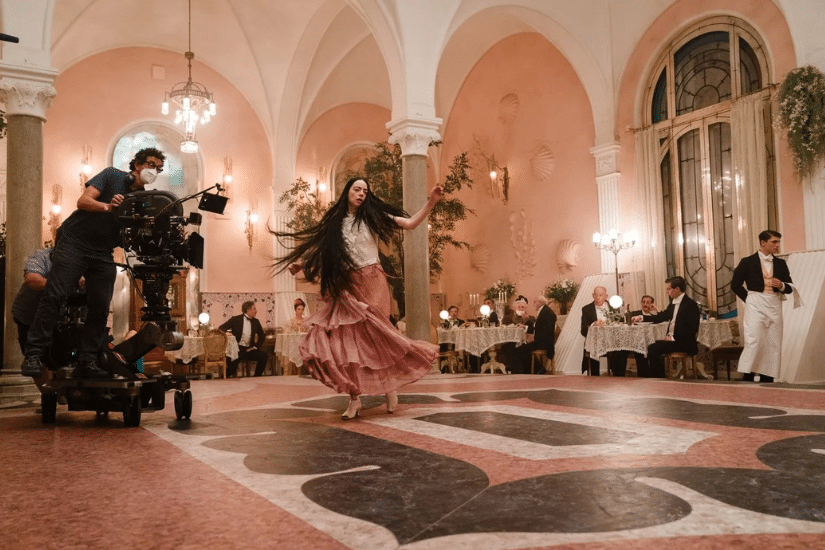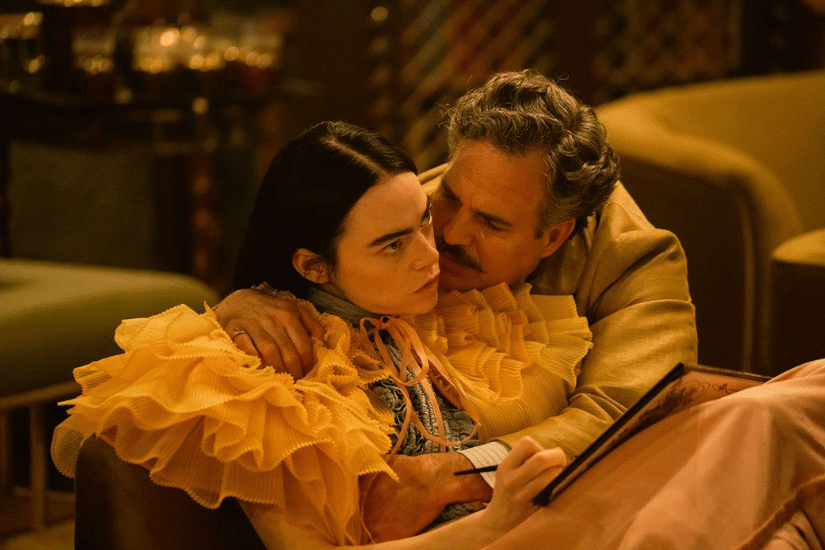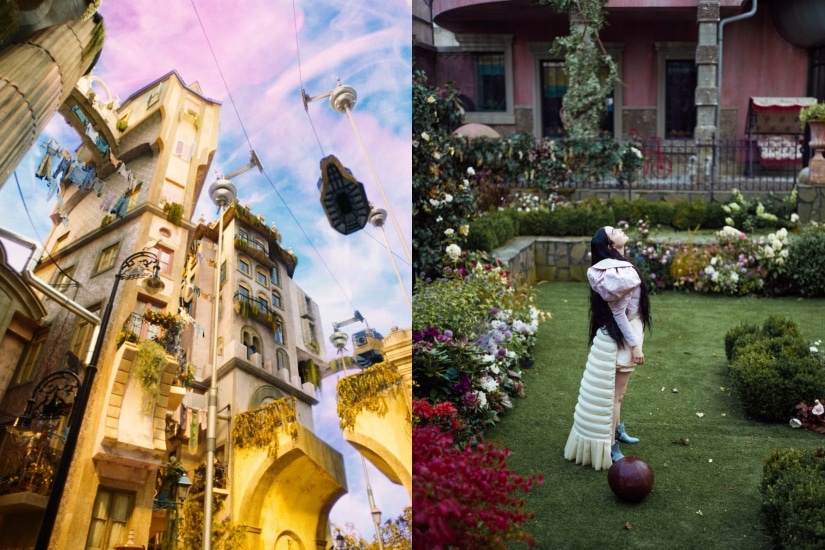“Poor Things” successfully won this year’s Oscar for “Best Production Design,” led by the Greek genius director Yorgos Lanthimos and his team of top-notch professionals behind the scenes. From costume design, set design to camera techniques, everything was meticulously crafted with its unique aesthetic of dark humor, step by step constructing a breathtakingly surreal and beautiful world. Let’s uncover the secrets of the film art world!
The unique atmosphere of black and white films presents an absurd aesthetic.
Director Yorgos Lanthimos, in “The Favourite,” teamed up with cinematographer Robbie Ryan, who he previously collaborated with on “The Lobster,” using different lenses and film, including the bold use of wide-angle and fisheye lenses seen in “The Lobster” to distort visual perception. This time, black and white film was used along with specially made Ektachrome slide film to highlight different textures, colors, details, and contrasts, creating a unique and visually stunning aesthetic.
In “Poor Things,” the fisheye lens is used extensively in the “childhood” scenes of the female lead Bella (played by Emma Stone). Through the fisheye lens with a close to 180° field of view, the scenes appear almost exaggerated, combined with eerie and tense music, black and white color scheme, making the audience feel discomfort and horror, while also reflecting the twisted mind of its creator, Gwinplaine (played by William Defoe), presenting a surreal world.
A new attempt at “Poor Things” – zoom lens
“In the camera work of ‘Poor Things,’ in addition to the old ways of Yorgos Lanthimos, there are also new attempts. Robbie Ryan: ‘Yorgos Lanthimos wants to try something new in every film. There was no zoom in ‘The Favourite,’ but this time, we used a lot of zoom, and we used zoom lenses to develop the scenes.'”

In addition to zooming, the film also extensively uses three types of camera movements: Dolly, Zolly, to create a sense of fear and humor, while being as unpredictable as Bella’s thoughts. In addition, close-up shots are used in conjunction with performances to focus on description and plot advancement, and are heavily used in the first part “childhood” and the second part “travel period”.
Further reading:
- Choosing a 15th-century castle! Dior announces a 2025 early spring fashion show in Scotland
- Behind the scenes of the actress, the little stories about Emma Stone!
- Oscar-winning makeup and hair! Details of the makeup and hairstyle of the main characters in “Poor Things” revealed
Accurately reproduce real-world scenes, paying tribute to the film style of the 30s.
Art design is the most important part of director Yorgos Lanthimos’ creation of a surreal sense of story. The beautiful scenes of “The Lobster” were created by designers Shona Heath and James Price. James Price: “When I first met Yorgos Lanthimos, he told me he wanted to shoot a 1930s-style film using modern techniques.”
The production team initially traveled to Budapest, Prague, and other places to scout locations for on-site filming, but the director drew inspiration from films of the 1930s and decided to create a surreal world in the movie that is both futuristic and fairy-tale-like from scratch. Production designers Shona Heath and James Price built scenes of London and Lisbon, a scientist’s mansion, a cruise ship, Parisian squares and brothels, a hotel and slums in Alexandria Harbor at a film studio in Budapest. Emma Stone described these scenes as so large that it would take her half an hour to walk through them, “It’s like they created a city!”
The scene alternates between reality and fantasy, so you will see familiar yet unfamiliar London, Lisbon, and Paris. James Price: “He wants to create a world that we can see in our real lives, but at the same time maintain a consistency of a new language, a language that lies between surrealism, fantasy, otherworldly, and dreamlike, but also set in a familiar era.”
In the end, Shona Heath and James Price created scenes at Origo Studios in Budapest, Hungary. The studio covers 115,000 square feet and has four indoor stages, as well as 60,000 square feet of outdoor space. The huge Lisbon scene in the film was built at Korda Studios, the largest studio on the European continent, taking half an hour to walk through the entire scene. James Price: “From the beginning of the film production, there was nothing that was impossible. He wanted it to look like something that had never been done before.”
Romanticism under shock is filled with a strong sense of irony.
The reason why the works of Yorgos Lanthimos leave a deep impression is because his romance always carries a sense of horror, as seen in “The Lobster.” The film is described as a “twisted sci-fi romantic comedy,” where you will see several emotional moments of love, but at the same time there are terrifying moments, especially in the relationship with David Weisz (played by Rachel McAdams).
Bella was originally engaged to Mike McCandless (played by Rami Yousef), but was seduced away by Duncan, traveling and engaging in a sexual relationship with him. However, this “romance” ends in a terrible way. Duncan was originally a playboy, but ultimately couldn’t help falling in love with Bella uncontrollably, eventually going mad. In the director’s own words: “All my films are about problem children.”


